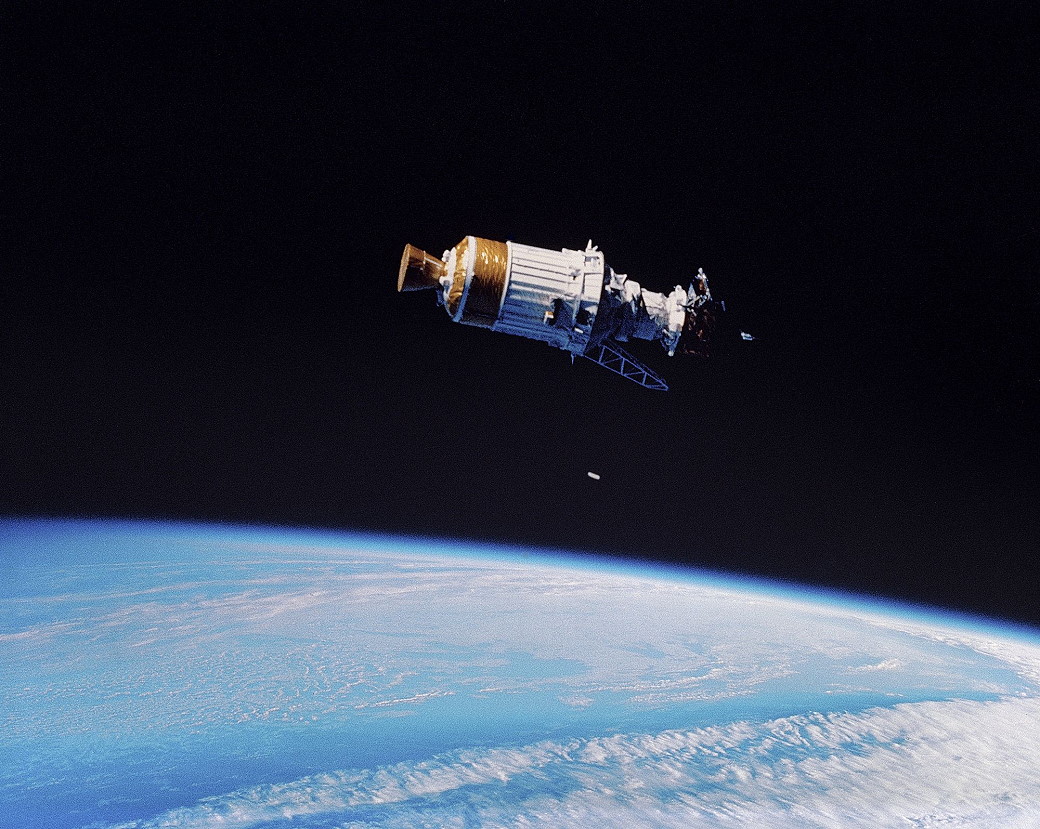
A quarter-century ago, this week, in October 1990, the crew of STS-41—Commander Dick Richards, Pilot Bob Cabana, and Mission Specialists Bruce Melnick, Bill Shepherd, and Tom Akers—successfully launched the shuttle’s fastest-ever Earth-departing payload, the joint U.S./European Ulysses spacecraft, bound for an extended period of exploration of the Sun’s poles. Over the following 19 years, until the end of its life in June 2009, Ulysses would successfully perform passages over the north and south poles of the Sun on no fewer than three occasions, as well as serendipitously passing through the coma tails of three comets and repeatedly observing Jupiter from afar. As for Discovery’s crew on STS-41, their mission came after six frustrating months of delay, following a series of hydrogen leaks, involving her sister shuttles Columbia and Atlantis.
Ulysses was the first spacecraft ever designed to venture beyond the “ecliptic plane,” allowing for studies of our parent star in three dimensions and providing humanity’s first opportunity to assess the total solar environment, across a full range of heliographic latitudes. Since the ecliptic plane differs from the Sun’s equatorial plane by only 7.25 degrees, it was previously only possible to observe it from low latitudes. In Ulysses’ case, a program of high-latitude exploration was afforded by utilizing the gravitational assistance of the Solar System’s largest planet, Jupiter. That said, NASA originally envisaged the launch of its Pioneer-H spacecraft in 1974 for solar polar rendezvous, and, although it failed to gain final approval, it was later reborn as a joint venture with the European Space Agency (ESA) and initially named the International Solar Polar Mission (ISPM).
In its first incarnation, ISPM comprised two discrete spacecraft—one built by NASA, the other by ESA—which would both employ Jovian gravity-assists, with one traveling past the planet’s south pole and bending its trajectory to encounter the solar north pole, and the other voyaging past Jupiter’s north pole in order to achieve rendezvous with the solar south pole. The result would have been a pair of in-situ measurements for mapping the Sun’s magnetic fields and anomalous “solar wind.” The ISPM was formally approved in 1976 and work on the two spacecraft began two years later, ahead of a single shuttle launch, boosted by a Boeing-built Inertial Upper Stage (IUS), in February 1983.
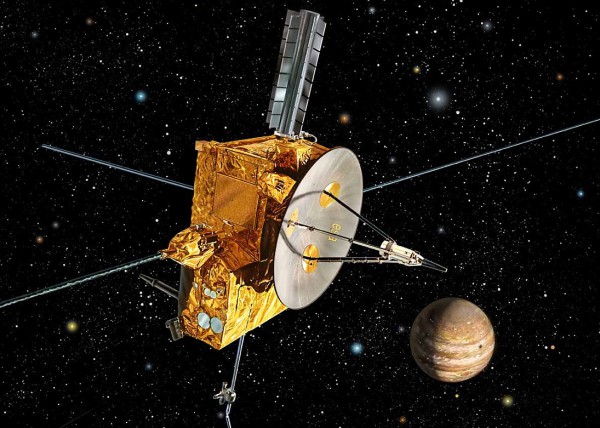
However, the relatively limited capabilities of the IUS for planetary encounters raised concerns and, in April 1980, ISPM was split into two halves and rescheduled for separate shuttle launches in 1985. With the nascent shuttle program drawing voraciously upon NASA funds, a decision was made in February 1981 to slow the development of the U.S. ISPM spacecraft and the IUS was later dropped in favor of a more powerful, liquid-fueled booster, built by General Dynamics. Known as the “Centaur-G Prime,” its implementation pushed the ISPM launch date back to no sooner than May 1986.
The Centaur carried an enormous load of liquid oxygen and hydrogen—totaling in excess of 36,000 pounds (16,300 kg)—and came to be nicknamed a “balloon tank,” owing to the fact that it required total pressurization in order to fully rigidize. (Indeed, if it was not fully pressurized, a single push from a human finger could flex its metallic walls.) Right from the star, the Centaur was viewed warily by NASA’s safety officials, whose rule of thumb dictated that no single failure should ever be capable of endangering the shuttle or her crew. Disturbingly, the Centaur’s pressure regulation hardware lacked a backup facility and, worse, a failure of its internal bulkhead had the potential to rupture the walls of both of its propellant tanks. Moreover, the dangers of propellant “sloshing” risked a whole range of controllability problems for the shuttle itself. Balanced against these risks was the promise that the Centaur could boost the ISPM to Jupiter.
Potential disaster hit the ISPM in September 1981, when NASA was forced by the House Appropriations Committee to terminate the production of its spacecraft. However, ESA pressed on with its own craft, which, at 815 pounds (370 kg), was small and light enough to be reassigned back onto an IUS in January 1982. (In fact, it was so small, said STS-41 Commander Dick Richards, that it could quite easily be fitted onto the back of a pickup truck.) By this time, the absence of the Centaur was creating massive financial consequences: NASA’s Jupiter-bound Galileo was a hugely important voyage and to be launched by an IUS meant that its journey time to Jupiter would double, its mission duration would effectively be halved, and its overall scientific harvest would be seriously compromised. Within a matter of months, plans changed yet again. A groundswell of support for the Centaur, spearheaded by New Mexico Senator and former Moonwalker Harrison “Jack” Schmitt, led to its reinstatement. In spite of the cost of changing boosters again and the lingering safety fears, the reduced journey times and increased scientific bounty which the Centaur could offer Galileo and the ISPM were deemed worthy of the risk. In July 1982, President Ronald Reagan himself approved the change.
The ISPM, therefore, reverted back to the Centaur and, since both it and Galileo needed to travel to Jupiter, both were scheduled for two separate shuttle missions during the same “launch window” in May 1986. In the meantime, by 1983, the Europeans had completed the fabrication of their spacecraft: a small, boxy machine, with an attached dish antenna and a NASA-provided Radioisotope Thermoelectric Generator (RTG) power unit. It would be spin-stabilized at five revolutions per minute and its attitude would be managed by four pairs of hydrazine thrusters. Ten scientific instruments were manifested—half of them provided by ESA and half by NASA—to explore radio wave emissions from solar plasmas, together with measurements of magnetic fluxes, observations of electrons, ions, neutral gas, dust and cosmic rays, and analysis of the solar wind.
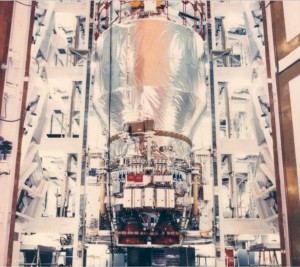
As the ISPM changed, so too did its name. One leading contender was “Odysseus,” to honour the mythical Greek hero of the Trojan War, whose 10-year journey back home to reclaim his kingdom of Ithaca and his suitor-pestered wife, Penelope, has made his name a synonym for a voyage with many changes of fortune. The name was entirely fitting. In the same way that the ISPM would follow an indirect path to explore an uncharted destination, so the mythical Odysseus had taken many unexpected twists and turns before reaching the end of his journey. At length, the Latinized version of Odysseus’ name—“Ulysses”—was picked instead. It had been proposed by an Italian physicist, Bruno Bertotti of the University of Pavia, whose gravitational wave experiment was aboard the mission. In Bertotti’s mind, the name drew upon not only the rich cultural heritage of Troy, but also offered a nod toward other more recent writings: Alfred, Lord Tennyson’s epic poem, James Joyce’s novel, and Dante Alighieri’s Inferno. In the latter, Ulysses famously guided his crew westwards into the unexplored waters beyond the Strait of Gibraltar. His terrified men mutinied, but Ulysses calmed them and encouraged them “to follow after knowledge and excellence.”
As with all voyages of exploration, Ulysses and its Centaur booster required massive preparation on the ground. Challenger, the vehicle assigned to deliver the spacecraft into low-Earth orbit on Mission 61F, underwent extensive modifications for the purpose. Extra plumbing and emergency dumping vents were installed into the shuttle to load and drain the Centaur’s propellants, control panels were fitted in the flight deck, an S-band telemetry antenna was added, and a huge Centaur Integrated Support Structure (CISS) in the payload bay served to position the “stack” for deployment.
According to the Crew Activity Plan (CAP) for Challenger’s mission, released by NASA in mid-January 1986, the shuttle and its crew of four—Commander Rick Hauck, Pilot Roy Bridges, and Mission Specialists Mike Lounge and Dave Hilmers—would launch at 4:10 p.m. EDT on 15 May. Assuming an on-time liftoff, the shuttle carried provisions for a four-day flight and the sheer weight of the Centaur was such that a number of crew provisions, including the galley, had to be removed. Hauck’s crew would have entered a relatively low orbit of just 105 miles (169 km) and had just nine hours to get Ulysses out of the payload bay. The Centaur was required to periodically dump its boiled-off gaseous hydrogen to keep tank pressures within their mandated limits, and, beyond nine hours, it would have “bled” so much propellant that the remainder would have been insufficient to perform the engine “burn” to inject it onto a trans-Jupiter trajectory. After deployment, the Centaur’s twin engines would have ignited to carry Ulysses toward a rendezvous with the giant planet in July 1987 and from thence an encounter with the Sun’s polar regions in 1989-1991. All of these plans ground brutally to a halt on 28 January 1986, when Challenger exploded during liftoff, killing her entire crew.
The resulting presidential investigation—headed by former Secretary of State William Rogers— uncovered many safety flaws in the reusable shuttle, several of which related directly to the Centaur, and in June 1986 the tempestuous booster was formally canceled by NASA Administrator Jim Fletcher. With both Ulysses and Galileo now forced to wait out lengthy delay before the shuttle flew again, other options to deliver them to Jupiter had to be worked out. At this point, the IUS returned to the fore and in April 1987 a firm launch target of October 1990 was established for Ulysses. It would be a narrow “window,” just two weeks in duration, and achieving it would be critical if the spacecraft was to properly rendezvous with Jupiter in February 1992 and go on to explore the solar poles in 1994-95.
The second part of this article will appear tomorrow.
Want to keep up-to-date with all things space? Be sure to “Like” AmericaSpace on Facebook and follow us on Twitter: @AmericaSpace




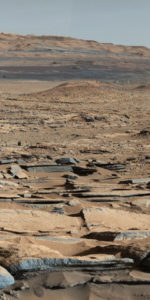
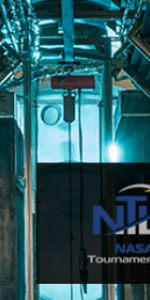
One Comment
One Ping
Pingback:‘On its Way’: 25 Years Since STS-41 Sent Ulysses to the Sun (Part 2) « AmericaSpace